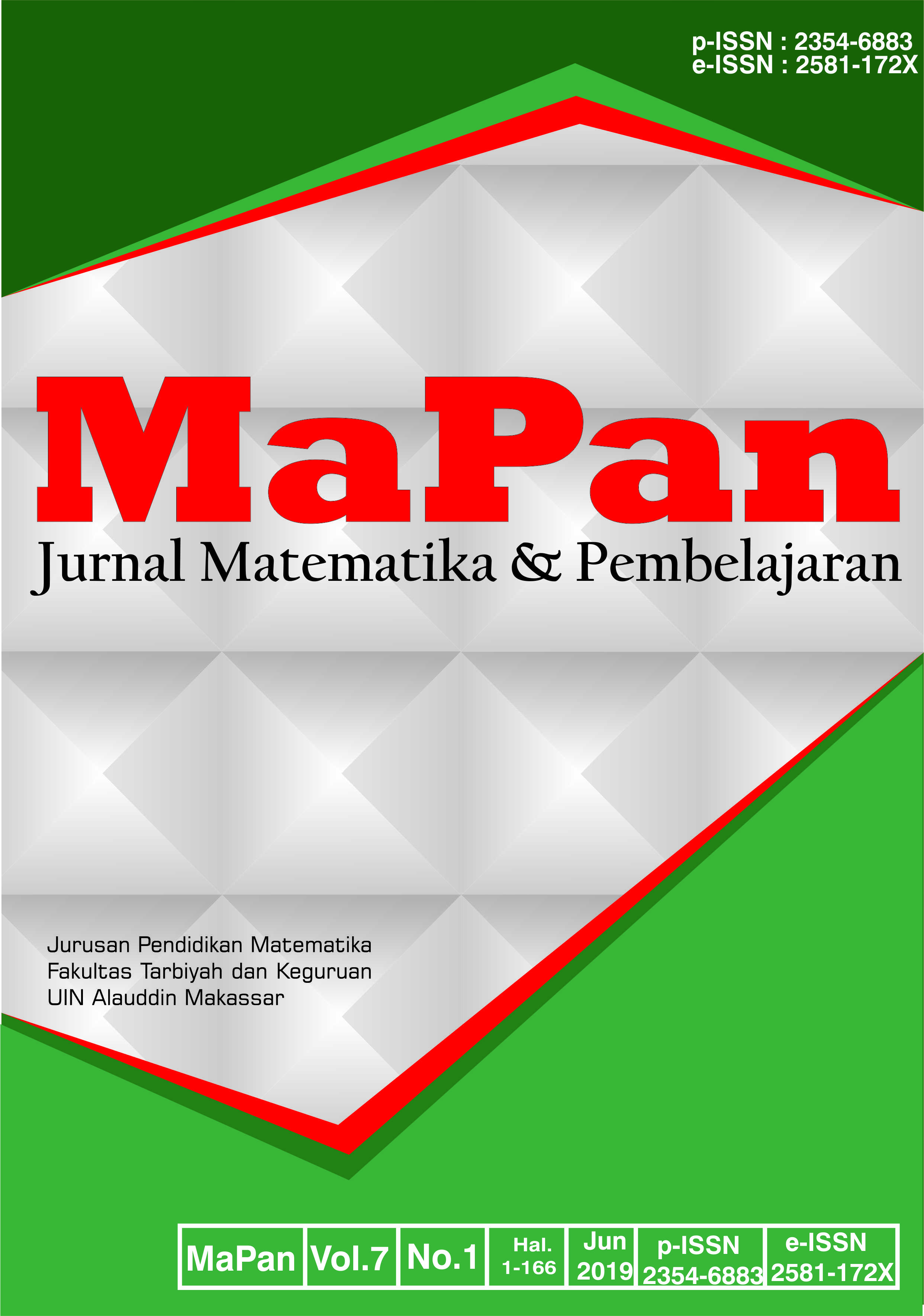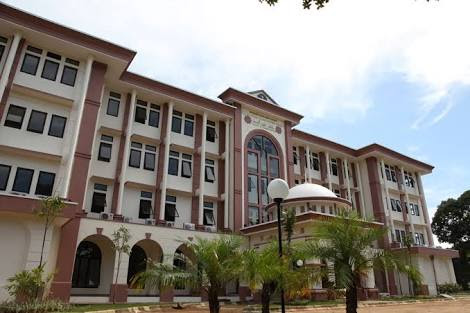PROFIL FLEKSIBILITAS SISWA SD DALAM MEMECAHKAN MASALAH GEOMETRI DITINJAU DARI GENDER
Abstract
Abstrak:
Penelitian ini bertujuan untuk mendeskripsikan profil fleksibilitas siswa SD dalam memecahkan masalah geometri. Metode penelitian yang digunakan adalah penelitian deskriptif eksploratif dengan pendekatan kualitatif. Teknik pengumpulan datanya dilakukan dengan pemberian tugas dan wawancara. Analisis data menggunakan metode triangulasi. Hasil penelitian yang diperoleh yakni subjek laki-laki menyebutkan informasi yang diketahui dan mengungkapkan pertanyaan dalam soal dengan tepat, dan dapat menyelesaikan masalah geometri dengan menggunakan lima cara, sedangkan subjek perempuan menyebutkan informasi yang diketahui dan mengungkapkan pertanyaan dalam soal dengan tepat dan dapat menyelesaikan masalah geometri dengan menggunakan tujuh cara.
Abstract:
The study aimed at describing the flexibility profile of the elementary students in solving the geometry tests. The research method used in this study was explorative descriptive research with a qualitative approach. Giving assignments and the interview were used as the data collection technique. Furthermore, the data obtained used triangulation method. The findings showed that the male students mentioned the known information and answered the questions correctly, while the female students mentioned the known information and answered the questions correctly as well as able to solve the geometry tests by using seven ways.
Downloads
References
Brandon, P., Newton, B.J., and Hammond, O. W. (1985). The superiority of girls over boysin mathematics achievment in hawaii. In Paper presented at annual meetingof American Educational Research Association. Retrieved from https://eric.ed.gov/?id=ED260906
Hudojo, H. (1988). Mengajar belajar matematika. Jakarta: Departemen Pendidikan dan Kebudayaan Direktorat Jenderal Pendidikan Tinggi Proyek Pengembangan Lembaga Pendidikan Tenaga Kependidikan.
Lestari, N. D. F. (2010). Profil pemecahan masalah matematika open-ended siswa kelas V Sekolah Dasar ditinjau dari perbedaan gender dan kemampuan matematika. Surabaya: UNESA.
Munandar, U. (2009). Pengembangan kreatifitas anak berbakat. Jakarta: Rineka Cipta.
Orton, A. (1992). Learning mathematics, issue, theory and classroom practise (3rd ed.). Trow bridge. Wilts.: Geat Britain, Printed , and Bound by Potesios Ltd.
Pehkonen, E. (1997). The State of art in mathematical creativity. ZDM Mathematic Education, 29(3), 63–67. Retrieved from https://link.springer.com/article/10.1007/s11858-997-0001-z
R. Star, Jon & Durkin, Kelley & Rittle-Johnson, Bethany & Lynch, Kathleen & Newton, Kristie & Gogolen, C. (2007). Improving students’ flexibility in algebra: the benefits of comparison. Retrieved from https://www.google.com/url?sa=t&rct=j&q=&esrc=s&source=web&cd=1&ved=2ahUKEwjEkITu9YjjAhUMK48KHTTpDDMQFjAAegQIARAC&url=http%3A%2F%2Fgseacademic.harvard.edu%2F~starjo%2Fpapers%2FCalifAlgForum.ppt&usg=AOvVaw27NHYuPcxjgBxEX_B9ddiZ
Silver, E. A. (1997). Fostering creativity through instruction rich in mathematical problem solving and thinkingin problem posing. ZDM Mathematic Education, 29(3), 75–80. Retrieved from https://link.springer.com/article/10.1007/s11858-997-0003-x
Siswono, T. Y. E. (2008). Model pembelajaran matematika berbasis pengajuan dan pemecahan masalah untuk meningkatkan kemampuan berpikir kreatif. Surabaya: Unesa University Press.
Tamara Savelyeva. (2014). Implementation of creative education policy in russian higher education curricula. Creative Education, 5(2), 444–454. Retrieved from https://www.scirp.org/(S(lz5mqp453edsnp55rrgjct55))/reference/ReferencesPapers.aspx?ReferenceID=1088611
Zhu, Z. (2007). Gender differences in mathematical problem solving. International Education Journal, 8(2). Retrieved from https://www.researchgate.net/publication/255607421_Gender_differences_in_mathematical_problem_solving_patterns_A_review_of_literature
Copyright (c) 2019 Agus Subaidi, Harfin Lanya

This work is licensed under a Creative Commons Attribution 4.0 International License.


